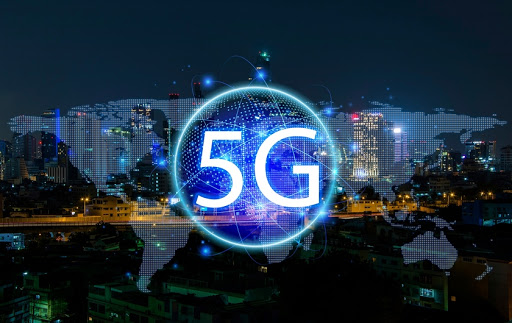TECHNOLOGY FOCUS
5G NR is a new air interface being developed for 5G.5G will initially be made available through improvements in LTE, LTE-Advanced and LTE Pro technologies. But it has soon been followed by a major step-up with the introduction of a new air interface. 3GPP (3rd Generation Partnership Project) made decisions on some of the technologies to be used in 5G NR as part of the 5G NR Release 14 Study Item which officially began in March 2016. From the second half of 2017 3GPP’s work has been focused on Release 15 to deliver the first set of 5G standards. The non-standalone (NSA) 5G NR variant was to be finalised by March 2018 but in fact was approved in December 2017, the first 5G standard. It uses the existing LTE radio and core network. The next evolution was in 2019-2020 with the Stand Alone (SA) standard.
5G NR is being designed to significantly improve the performance, flexibility, scalability and efficiency of current mobile networks, and to get the most out of the available spectrum, be that licensed, shared or unlicensed, across a wide variety of spectrum bands. Consequently 5G NR must be able to deliver a huge number of varied services, support a wide range of deployment models from traditional macro to hotspot deployments and allow new ways for devices to interconnect.
As an overall this course will introduce participants in to the technology details and functional aspects of 5G NR physical layer, emphasizing in both the 3GPP standardized specs and the technical details which lead into better understanding of 5G NR RAN planning and optimizing. Exercises will be explained throughout the course material to emphasize further the implication of different configurations into the 5G NR functionality.


COURSE CONTENT
5G New Rado (NR) Physical Layer training course provides a systematic and in-depth description of 5G New Radio (NR) technology, fully aligned with 3GPP standards and specification. Starting with a background on the 5G NG-NR requirements, network evolution, standardization landscape and roadmap, this course presents 5G RAN NR physical layer architecture, functionality and and air interface protocol structure. Participants will follow a detailed description of the 5G NR physical layer including all technical details for DL and UL time and frequency resource structure, channelization, scheduling, and numerologies, expanding into massive MIMO and beam forming and ending into 5G NR functionality and procedures.
In order for the attendant to better understand the content of this topic and to gain a further insight, it is also recommended (but not necessary) to have prior attended 5G Network Overview course as well as having prior knowledge and exposure to LTE air interface and physical layer.
.
.
WHO SHOULD ATTEND
This course presents the principles of initial 5G NR physical layer. It is therefore considered to be a valuable topic for Radio Network Planners, Radio Optimizers, Technical Managers as well as Telecom Consultants. Moreover it is considered a good technical companion for Telecom engineers and wireless researchers whose daily work and duties are related to 5G technology.

Section 1 – 5G NR Overview
5G NG-RAN principles
- 3GPP rel 15 and Rel 16 overview
- 5G NG-RAN deployment options review
- NSA EN-DC Option 3, 3a, 3x,
- SA option 2
- Other options 4, 7
- 5G C-RAN architecture
- gNodeB CU
- gNodeB DU
- F1 protocol
- EN-DC over gNodeB split
5G New Radio (NR) Principles
- New Spectrum
- FR1 low and mid bands
- FR2 (mmWave) high bands
- Scalable (Flexible) numerology
- Why, How
- Slots, subframe
- Slot structure
- 5G NR timeslot and Cyclic Prefix
- 5G OFDM Waveforms
- CP-OFDM
- DFTS-OFDM
- NR frame structure
- FDD
- TDD modes
- Supplementary Downlink
- Supplementary Uplink
- 5G Bandwidth parts
5G New Radio (NR) Structure
- NR signals
- DMRS, CSI-RS,
- TRS, PTRS, SRS
NR channels
- SS/PBCH Structure
- PDCCH,CORSET0
- PUCCH
- PDSCH, PUSCH
- PRACH
- Ø Preample sequence generator
- Ø RACH/PRACH configuration index
Section 2 – 5G NR MIMO
MIMO Technology
- 3GPP MIMO Standardization
- The Wireless Channel Principles
- Coherent time
- Coherent frequency
- Angle of Arrival (AoA) and Direction of Arrival (DoA) - 3GPP MIMO technology
- Basic Transmission principles
- Beamforming
- Spatial Multiplexing
- Diversity - 3GPP Transmission modes
- TM1-2, TM3-7
- TM8, TM9, TM10
Massive MIMO (mMIMO) Technology
- Massive MIMO (mMIMO) standardization
- High Spectrum (mmWave) pathloss
- Beam-forming principles
- Digital Beamforming
- Analog Beamforming
- Hybrid Beamforming
- Massive MIMO Beams and Gain margins
- Codebook vs. Non-Codebook transmission
- SU-MIMO and MU-MIMO
- mMIMO beamforming modules and the Grid of Beams (GoB)
- Existing market mMIMO antennas (AAS-AAU units)
Section 3 – 5G NR Procedures
5G Physical layer Procedures
- 3GPP Physical Layer procedures – control Signaling
- PRACH Preample formats & Sequences
- Implication to Planning
- Implication to performance
- PUCCH formats
- Cell Search procedures
- SI Acquisition MIB/SIB1/RMSI
- Initial Beam Establishment
- SSB and beam sweeping
- Beam forming CSI RS and SRS
- Beam Management
- Beam tracking
- Beam mobility
- Power Control Overview
- NR measurements
- SS-RSRP, SS-RSRQ, SS-SINR
- CSI-RSRP, CSI-RSRQ, CSI-SINR
5G Layer 2 (MAC) procedures
- 3GPP Physical layer procedures for control signaling
- NR Scheduler Functionality
- Resource Allocation type 0, type 1
- PDCCH Aggregation level
- DL Scheduling procedures
- UL Scheduling procedures
- Transmit time control
- RACH Accessibility
- Message 1, 2, 3, 4
- Backoff time
- CBRA vs CFRA - HARQ Codebook principles
- LDPC Coding
- Legacy retransmissions
- Code Block Group (CBG) based retransmissions

